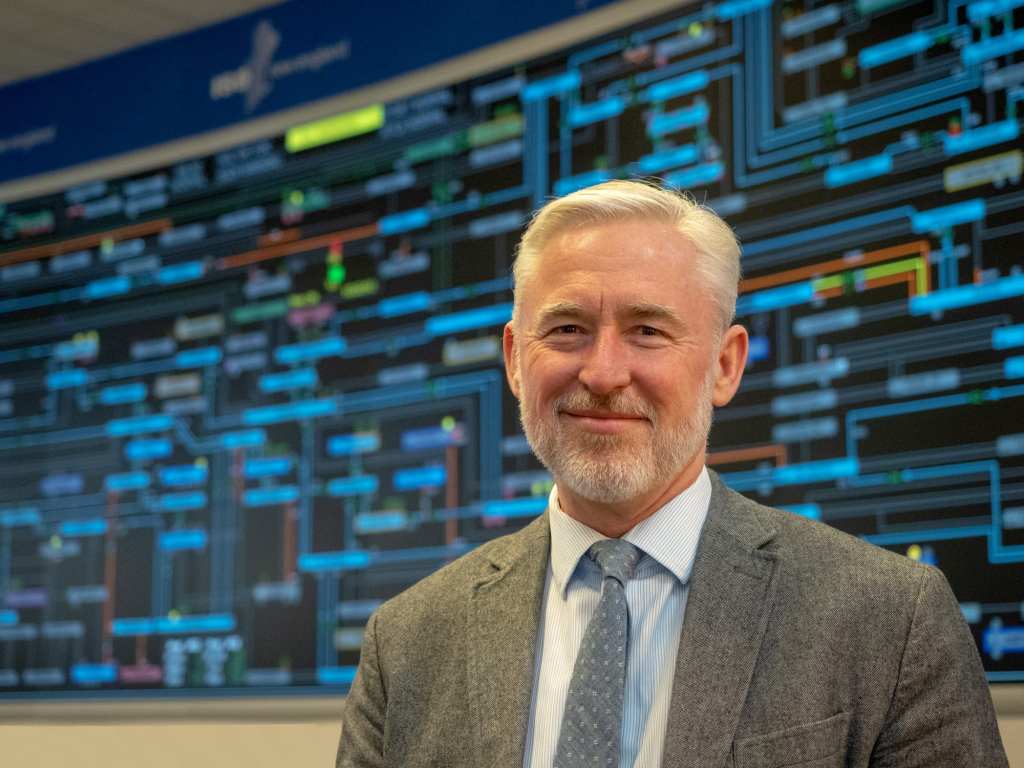GORDON VAN WELIE, the man charged with keeping the lights on in New England, is watching closely, fingers crossed, to see if the region can develop enough wind farms to not only displace power produced using fossil fuels but address the increased need for electricity to run cars and heat homes.
Van Welie, the president and CEO of ISO New England, oversees the region’s power grid. He says recent growth in solar power and energy conservation efforts has given the grid some breathing room, but that won’t last too long.
“The question of whether or not we will be in good shape or not five to 10 years from now is very much going to be a function of whether we can get that offshore wind industry up and going and interconnected into the system. And there are some troubling signs at the moment,” he said on The Codcast.
Van Welie says there are relatively few vessels available to install monopiles in the seabed and the supply chain for turbines, electrical cables, and other equipment is stretched very thin.
“All of those are very heavily constrained because New England is not the only place that wants clean energy. The whole world right now is moving in that direction,” he said. “And so that is going to have two impacts. One is it’s driving costs up. I think we should expect to see that the cost of offshore wind is going to be much higher than what we had thought it was a few years ago. … And the economics around the supply chain is also going to slow things down.”
Another variable is precisely when demand for electricity will start to take off. When will people in large numbers start buying electric cars and converting to electric heat? Van Welie expects the demand curve to look like a hockey stick, with slow, steady growth before shooting upward dramatically like the blade on the stick. But the tipping point for demand, the time when we hit the blade on the hockey stick, is difficult to predict.
“We’ve relied on the inputs we’ve received from the states, but we’re also seeing that the growth is not happening quite as quickly as what we had anticipated,” van Welie said. “So we just revised our forecast down a little bit from last year and we’re going to be watching that closely.”
Van Welie said officials in the states have the ability to stoke demand with the incentives they offer. “One of the things folks need to keep an eye on is to make sure that we don’t drive the demand harder than the supply can actually come online,” he said. “And if we hit that hockey stick from a demand point of view and the supply hasn’t caught up yet, then we’re in trouble. But that’s a few years out. So I think we are not feeling concerned about it today.”
The Joe Biden-Donald Trump rematch for the presidency is yet another variable to consider. The two administrations could not be more different when it comes to offshore wind – Trump slowed offshore wind approvals down while he was president and Biden has done everything in his power to speed them up while he has been in the Oval Office. What happens if Trump wins the election?
“I do worry about that a bit,” van Welie said. He noted that the first phase of wind farm development is in the pipeline and unlikely to be derailed.
“So the question you ask is probably more relevant to what comes after that,” van Welie said. “If you were to come up with the worst-case scenario where suddenly no more offshore lease areas are being approved for some period of time, I don’t think it’s going to affect that first stage so much, but I think it may affect the speed with which the second stage comes on. So you could end up creating a knock on delay for the next round. So that would worry me because that’s probably going to start affecting the mid-2030s. It’ll affect the supply from an offshore wind development perspective.”
The post Threading the region’s electricity needle appeared first on CommonWealth Beacon.

